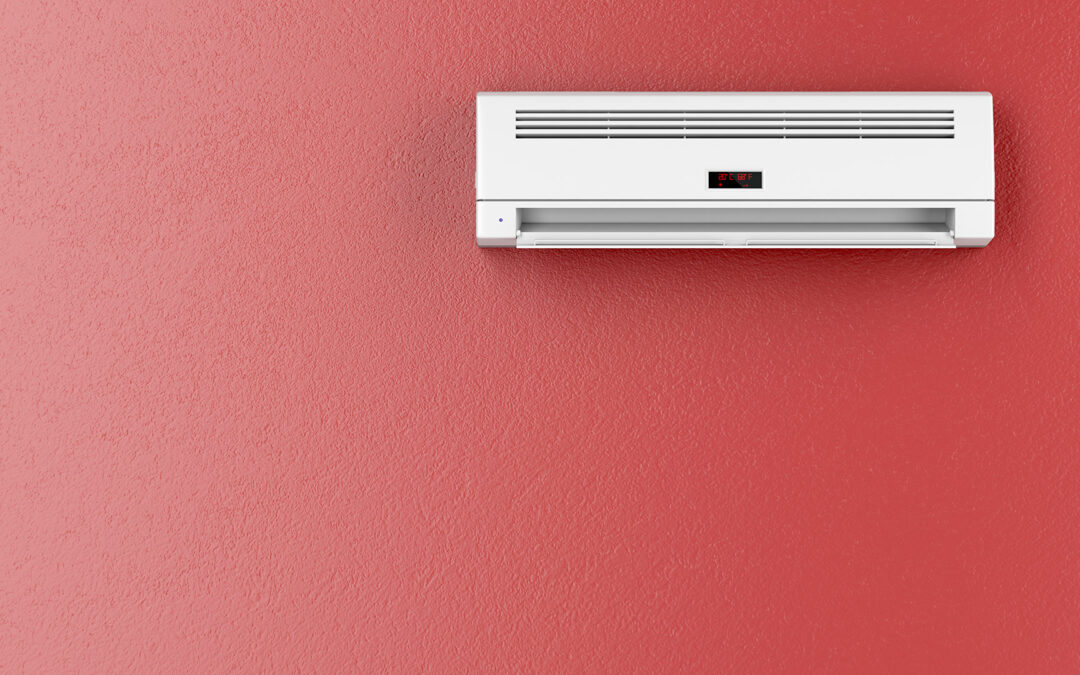Traditional Ducted Systems
Most homes are built using a ducted heating and cooling system, which takes in air through a series of ducts to heat or cool it, and then distributes it into the living space using another system of ducts. However, this requires thicker walls to house the ducts and a large space for the central heating and cooling unit. This can be impractical for some living spaces, like apartments, garages, or additions to the home or building. One solution to this problem is a ductless mini-split system.
What is a Mini-Split?
A mini-split consists of two units – one indoors and one outdoors – connected by refrigerant tubing and electrical wires through an access hole in the wall. The outside unit contains the compressor, condenser coil, and fan. The inside unit contains the evaporator coil and blower fan. The inside unit is typically mounted on the wall, but some can be mounted on the ceiling so long as there’s enough space, although some can be ceiling-mounted, known as “cassette units.”
Benefits of a Mini-Split System
Mini-splits offer a versatile system that can adapt to various requirements for individual living spaces. Ductless mini-splits offer many advantages over ducted systems. These include:
Easy Installation
Mini-splits only require a 2- to 3-inch hole drilled through the wall to allow the tubing and wires to pass. The outside unit can be placed anywhere there is enough space and the indoor unit can be placed where it is most convenient.
No Ductwork
Ducted systems need walls thick enough to accommodate the ducts. Mini-splits are perfect for spaces where ducted systems are undesirable or impossible.
Safety
Unlike central heating units that burn fuels to create heat, usually natural gas, which produces deadly gases, mini-splits heat and cool air by pulling it into the indoor unit where it passes over the evaporator coil to be cooled or heated, and then pushes it back into the room, creating zero deadly gas emissions.
Adaptability
Mini-splits come in a range of sizes to suit individual room requirements, allowing you to pick the correct unit for your living space, reducing energy consumption, and saving you money on your monthly bill.
Maintenance & Upgradability
Central heating units can be expensive to maintain, repair, and replace. Mini-splits are easy to maintain and simple to replace.
Disadvantages
While mini-splits offer substantial benefits, a few tradeoffs should be considered.
Higher Price
Mini-split units start at around $2,000 per unit. The price continues to climb if you need multiple units. The upfront cost can be much higher than a replacement central heating and air unit if the living space already has existing ductwork.
Limited Coverage
Mini-split units are designed to cover a single room or living space. For example, if you want to maintain an even temperature throughout a house, you’ll need to buy multiple units. Ducted systems distribute air to every room with a vent, keeping the temperature the same throughout the house.
More Frequent Maintenance
While mini-splits do offer easy maintenance and replacement, the annual cost of maintenance can be higher. Mini-split systems require maintenance twice a year. Central heating and cooling units require maintenance once a year.
Extreme Weather Conditions
Mini-split units can operate in temperatures between -15°F to 90°F. Traditional heating and cooling systems can operate in environments with temperatures above and below this, but mini-splits need special features to operate in more extreme temperatures.

Which is better: Central or Mini-Split?
Both traditional and mini-split systems offer advantages and disadvantages. Ductless mini-splits offer a more accessible and efficient solution to heating and cooling individual living spaces, while ducted systems offer lower installation and maintenance prices while also improving coverage. Ultimately, the decision comes down to your unique requirements.


